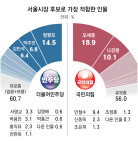Energy Ministry Mulls Oil Sand Buy
Energy Ministry Mulls Oil Sand Buy
Posted July. 03, 2006 03:28,
The Ministry of Commerce, Industry and Energy (MOCIE) announced on July 2 that if negotiations go according to plan, the National Oil Corporation will be able to conclude a formal contract at the end of this month to purchase an oil sand mining area.
Kim Young-hak, MOCIE Director General for New Energy & Nuclear Power, said, Details of the conditions have already been negotiated, and all that is left is agreeing on the price of the purchase. He added, The negotiations for the price are not yet concluded so I cannot reveal how much it will be.
Oil sand is sand that contains crude oil. It was not highly favored because of its expensive production costs, but with the continuation of recent soaring oil prices, oil sand is receiving attention as a substitute for oil. If the final contract is successfully concluded, the National Oil Corporation will begin constructing production facilities in 2008, and start full-scale commerce production in 2010, with plans to produce as much as 35,000 barrels per day.
A production of 35,000 barrels is an amount that applies to 30 percent of Koreas one-day independent development production of 115,000 barrels (from 2005 data) of oil, which would have the effect of raising the domestic independent development rate by 1.2 percent to 5.3 percent from 4.1 percent. The rate of independent development is a value that compares the amount of oil produced independently with the yearly imported amount, and it is used by net oil importers like Korea. MOCIE said, If we buy this oil sand mine, it will likely help achieve our goal for increasing our independent production rate by 18 percent by 2013.
Due to the fact that the oil sand business requires big-scale refining facilities, there are hopes that this purchase will establish a bridgehead for Korean plant industries in the Canadian oil refining industry. MOCIE said that Canada is actively searching for investments in refining facilities as it is predicted that the country will lack refining facilities for 310,000 barrels in 2010, and 1.2 million barrels in 2020. Canada (reserves of 175.2 billion barrels) follows Venezuela (270 billion barrels) to be the second country to own the most oil sand, but most regions have not yet been developed.
Sun-Woo Kim sublime@donga.com





![[김순덕 칼럼]이혜훈 장관 지명으로 ‘내란 청산’ 끝났다](https://dimg.donga.com/c/138/175/90/1/wps/NEWS/IMAGE/2025/12/31/133073126.1.jpg)

